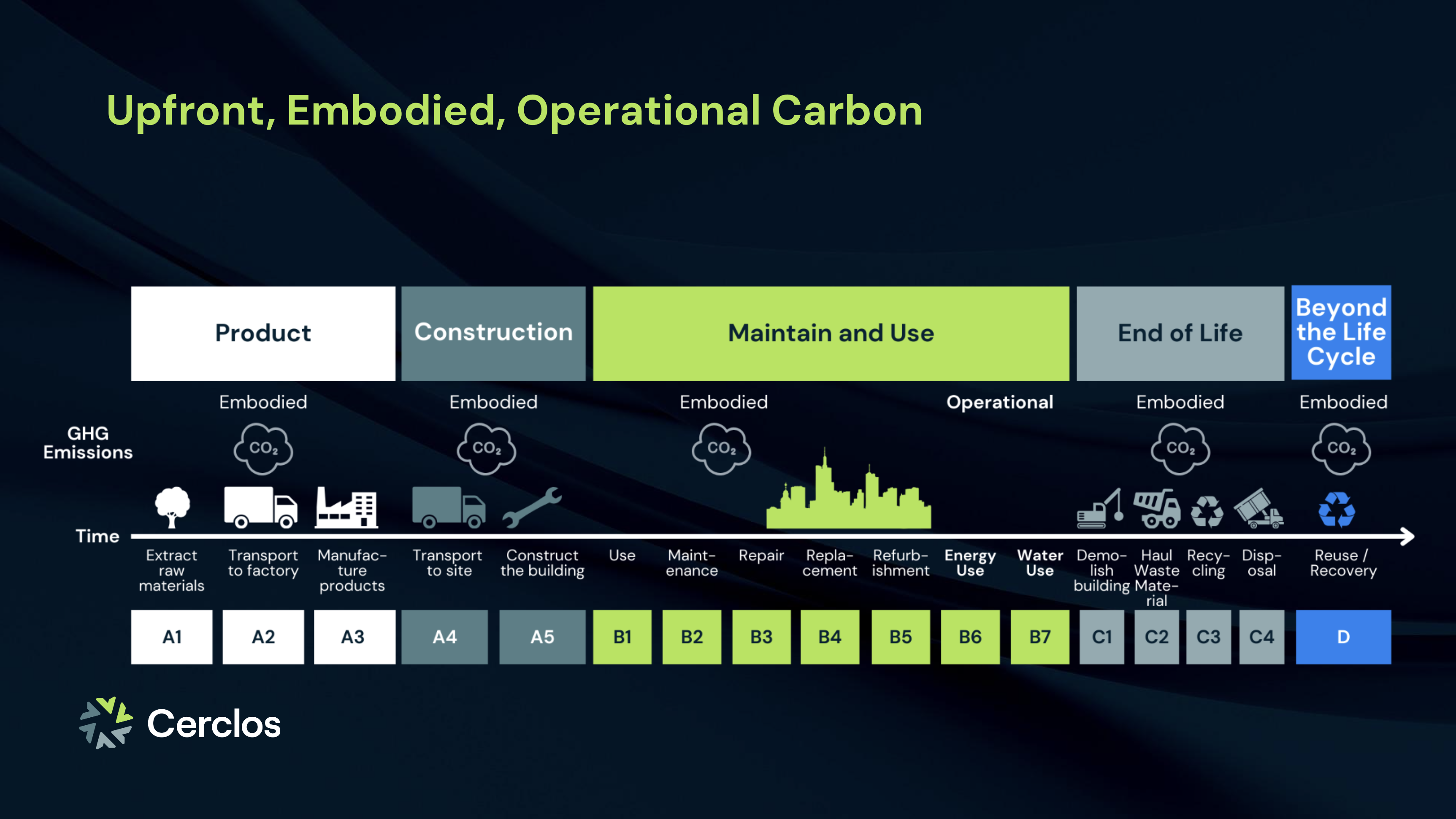As the building industry increasingly focuses on sustainability, the importance of decarbonization in the design and construction process has become paramount. In our recent webinar with Cerclos, we offered an in-depth exploration of how to effectively approach decarbonization for large campus building projects. We share insights not only addressing the technicalities of carbon reduction, but also how to navigate the complexities of upcoming U.S. building regulations and the evolving landscape of carbon reporting.
Central to Altura’s decarbonization strategy is the integration of Life-Cycle Assessment (LCA) through Cerclos’s eTool, a powerful tool that models both embodied and operational emissions to deliver low-carbon outcomes. This holistic approach to decarbonization not only streamlines carbon reporting but also enhances collaboration among stakeholders, informs critical decision-making, and leads to cost savings. By leveraging LCA and eTool, Altura empowers teams to lead the charge in creating sustainable, future-proof building designs.
The Life Cycle of Carbon in a Building

Phases of Life Cycle Carbon Assessment: Upfront, Embodied, Operation Carbon. Together, they make of Whole Life Carbon.
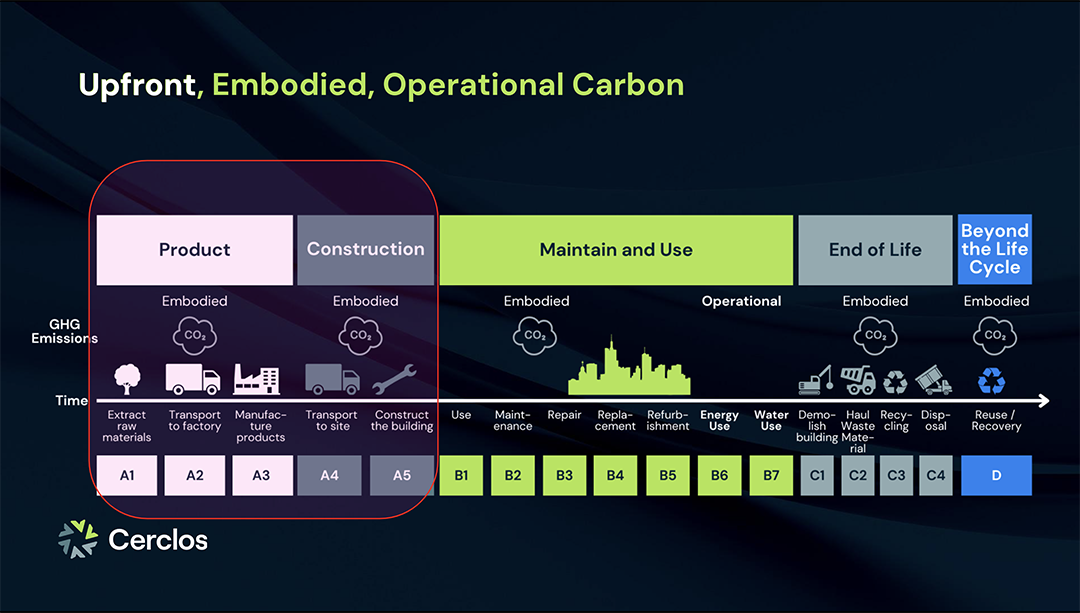
Upfront Carbon at the beginning of the lifecycle.
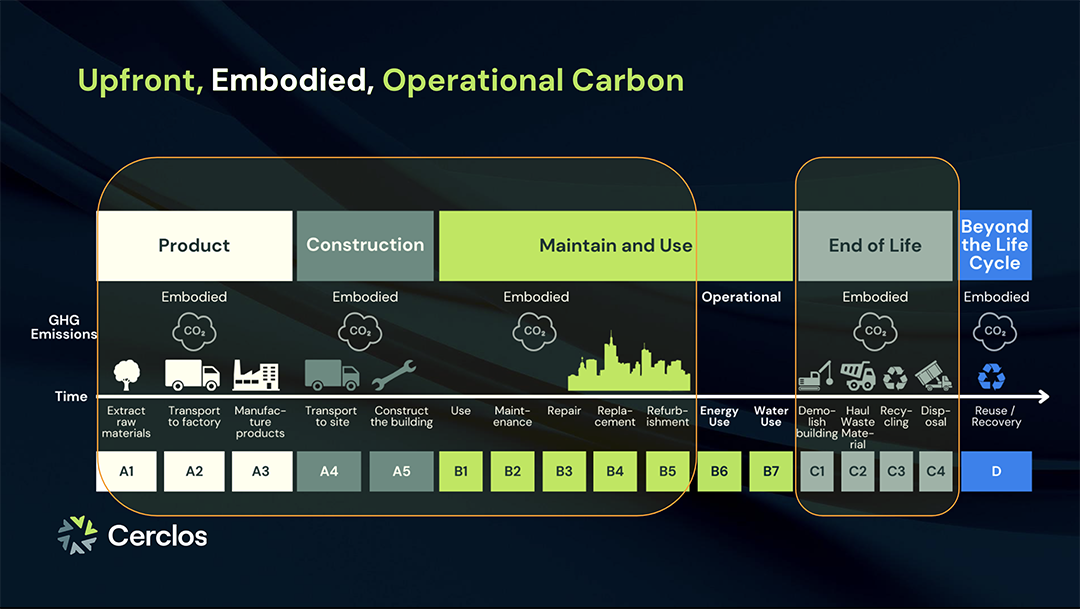
Embodied Carbon—also known as embodied greenhouse gas (GHG) emissions—refers to the amount of GHG emissions associated with upstream—
extraction, production, transport, and manufacturing—stages of a product or asset’s life.
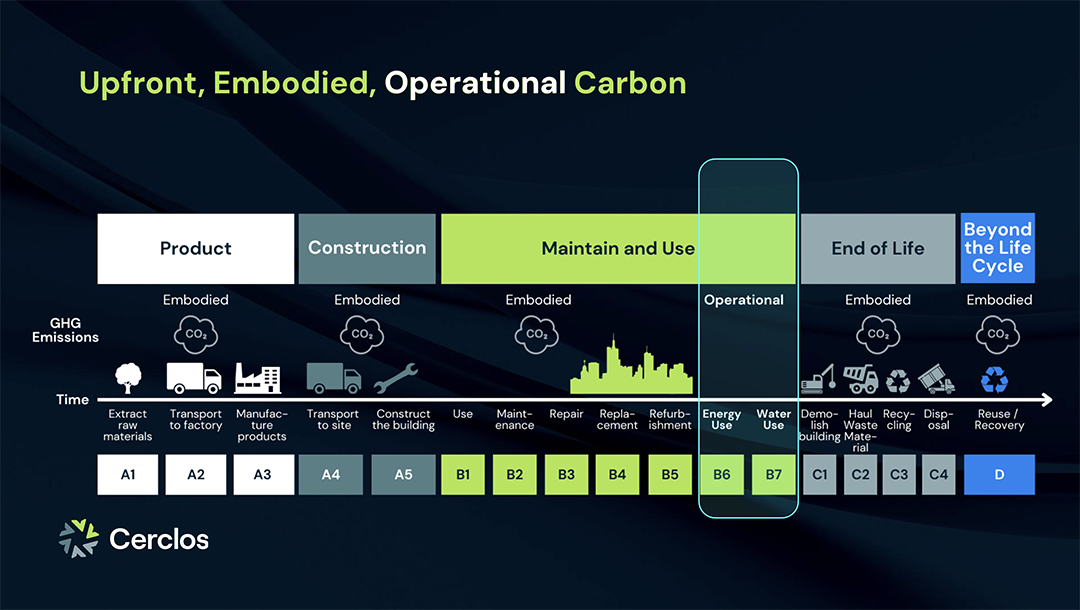
Operational Carbon is the amount of greenhouse gas (GHG) emissions released by the energy used to operate a building or infrastructure.
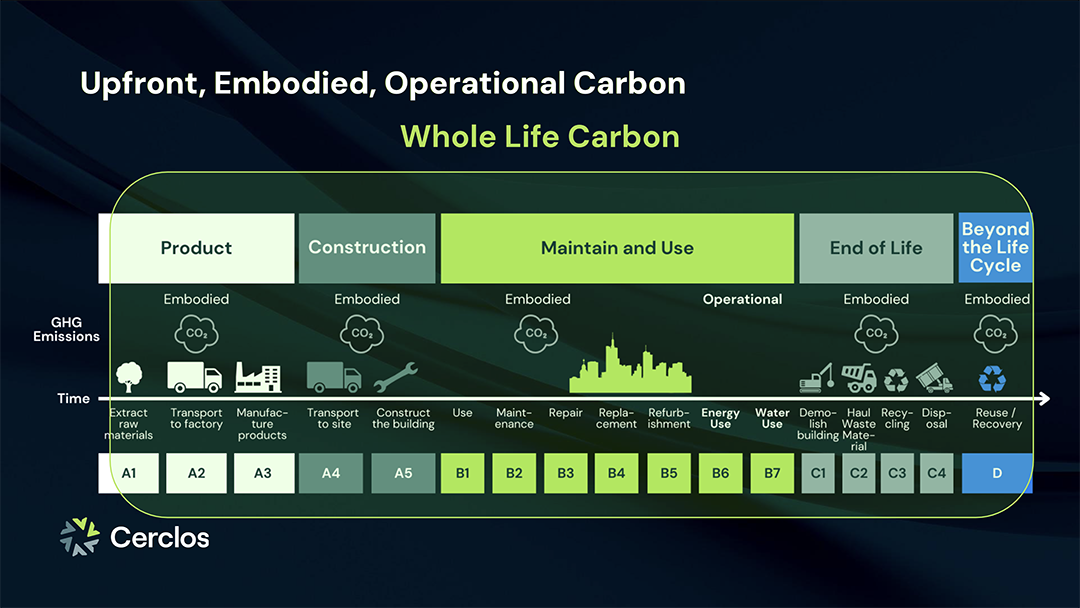
Together, all phases of the carbon lifecycle of a building make up Whole Life Carbon. Altura measures a building’s Whole Life Carbon with Cerclos’s eTool: a dynamic and
scalable life cycle assessment and comprehensive carbon management software for large, complex building projects.
Key Takeaways from the Webinar:
- Whole Life Carbon Approach: Understand the benefits of modeling both embodied and operational emissions.
- Introduction to Life-Cycle Assessment (LCA): Learn how LCA serves as the foundation for effective decarbonization strategies.
- Real-World Applications: Explore how LCA is applied in practice, including measuring embodied carbon.
- Regulatory Compliance: Stay ahead of the curve with insights into CALGreen compliance and upcoming building regulations across the U.S.
This comprehensive approach to building decarbonization underscores Altura’s commitment to leading the way in sustainable design, ensuring that projects not only meet regulatory requirements but also set a new standard for environmental stewardship.
If you’re interested in finding out more about how Altura can help you navigate your carbon reporting requirements, ensure whole-life carbon impact, and help your organization navigate upcoming legislation and reporting requirements for your facilities, or more about our partner Cerclos’s eTool Net Zero software, please reach out to us at hello@alturassociates.com.

Written by Christelle Raphael, Associate, Environmental Programs
craphael@alturassociates.com

